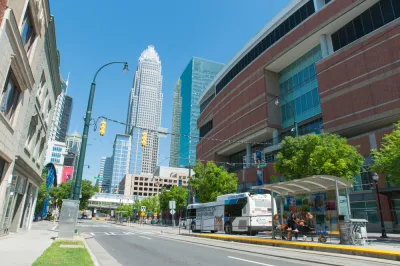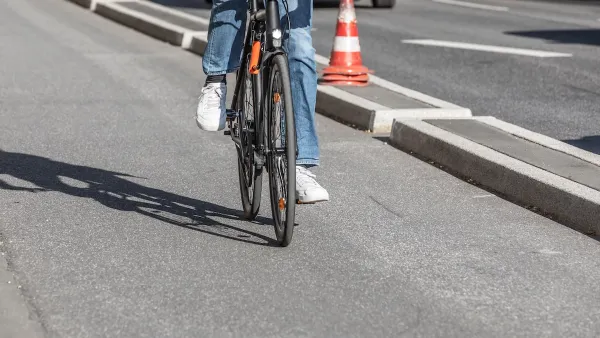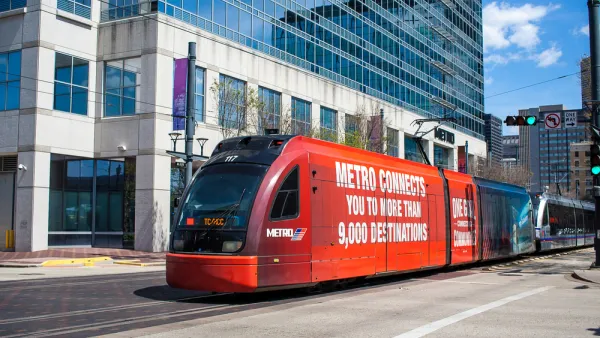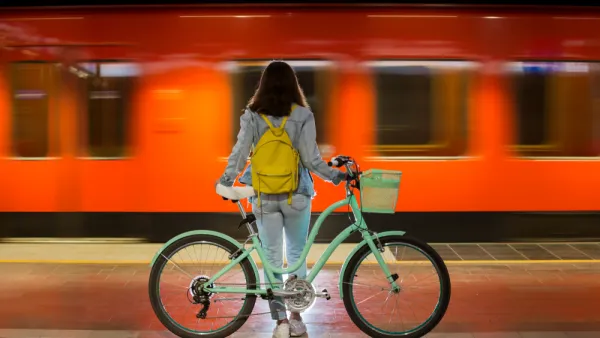The city’s newly approved Strategic Mobility Plan highlights the need for better options when it comes to walking, biking, and public transit, setting a goal to reduce driving to half of total trips.

Charlotte, North Carolina’s city council has approved a Strategic Mobility Plan that seeks to improve public transit options, reduce driving, eliminate traffic deaths, and increase economic mobility for public transit users. According to an article in Smart Cities Dive by Austyn Gaffney, “That effort follows a 2014 study out of Harvard and the University of California, Berkeley that ranked Charlotte last out of the nation’s 50 largest commuting zones for intergenerational, or economically upward, mobility.”
“[At-large city council member Braxton Winston] said the next step for community input would be identifying and prioritizing individual projects that address the plan’s goals.” Meanwhile, the city needs support at the state level to levy a new tax to support the plan, which does not yet have dedicated funding sources.
Alvaro Villagran, director of federal programs for the Shared-Use Mobility Center, “said the Charlotte program follows a general trend of cities moving away from a highway-oriented or street management perspective on transportation to an integration of shared mobility options like public transit, electric vehicles, cycling and pedestrian use.” The plan includes a goal of shifting to a 50-50 mode share, where half of trips or fewer are taken by single-occupancy vehicle. According to Villagran, “Instead of just disincentivizing cars, he said, communities need to make alternative modes of mobility realistic options for residents.”
FULL STORY: Charlotte mobility plan aims to slash car use, transform access to lower-emission options

National Parks Layoffs Will Cause Communities to Lose Billions
Thousands of essential park workers were laid off this week, just before the busy spring break season.

Retro-silient?: America’s First “Eco-burb,” The Woodlands Turns 50
A master-planned community north of Houston offers lessons on green infrastructure and resilient design, but falls short of its founder’s lofty affordability and walkability goals.

Delivering for America Plan Will Downgrade Mail Service in at Least 49.5 Percent of Zip Codes
Republican and Democrat lawmakers criticize the plan for its disproportionate negative impact on rural communities.

Test News Post 1
This is a summary

Test News Headline 46
Test for the image on the front page.

Balancing Bombs and Butterflies: How the National Guard Protects a Rare Species
The National Guard at Fort Indiantown Gap uses GIS technology and land management strategies to balance military training with conservation efforts, ensuring the survival of the rare eastern regal fritillary butterfly.
Urban Design for Planners 1: Software Tools
This six-course series explores essential urban design concepts using open source software and equips planners with the tools they need to participate fully in the urban design process.
Planning for Universal Design
Learn the tools for implementing Universal Design in planning regulations.
EMC Planning Group, Inc.
Planetizen
Planetizen
Mpact (formerly Rail~Volution)
Great Falls Development Authority, Inc.
HUDs Office of Policy Development and Research
NYU Wagner Graduate School of Public Service





























